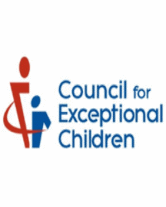Educating Children Who Are Deaf or Hard-of-Hearing
From: The ERIC Clearinghouse on Disabilities and Gifted Education
ERIC EC Digest #E551
Author: Patrick Stone
August 1997
What Is Meant by the "Auditory-Oral" Approach?
The auditory-oral approach is based on the fundamental premise that acquiring competence in spoken language, both receptively and expressively, is a realistic goal for children who are deaf or hard-of-hearing. Further, this ability is best developed in an environment in which spoken communication is used exclusively. This environment includes both the home and the classroom (Adams, Fortier, Schiel, Smith, & Soland, 1990; Stone, 1988). Elements of the auditory-oral approach that are critical to its success include:
- Parent involvement. Parental involvement and education are the bases for success in an auditory-oral approach. Acquiring effective speech and language requires that parents play an active role in their child's education. Early intervention efforts focus on educating parents to become effective communication partners. Classroom efforts involve supporting classroom activities and goals while advocating for their child.
- Appropriate amplification. The auditory-oral approach places a premium on consistent use of appropriate amplification. Each child's needs are evaluated individually and monitored carefully over time with modifications made as necessary. Hearing aids are the first choice; however, for children whose severity of loss limits the success of a hearing aid, cochlear implants are a viable option. Given the power and flexibility of current hearing aids and the availability of cochlear implants, it is realistic to expect almost every child with a hearing loss to hear speech at conversational levels.
Teaching children to use whatever hearing they have to further the acquisition of spoken language is basic to the auditory-oral approach. Although begun before school, oral intervention continues in the classroom. The four levels of listening skill development are detection, discrimination, identification, and comprehension. Because the purpose of developing listening skills is to further spoken language competence, speech is the primary stimulus used in listening activities (Ling & Ling, 1980). - Consistent quality speech training. Developing speech production skills (duration, loudness, pitch, and articulation) requires skilled teachers who work individually with children wearing appropriate amplification. Instruction is carried on at two complementary levels: the phonetic (developing proficiency with isolated syllables) and the phonologic (developing proficiency with words, phrases, and sentences). Skills are developed at the phonetic level and practiced immediately at the phonologic level. This is crucial as meaningful communication is the goal and serves to stimulate further development. Children are typically working at two or three stages at each level at any given time.
- Developmentally appropriate language instruction. Language is best learned in child-centered, naturalistic situations as opposed to didactic, teacher-directed activities, where students develop useful communication rather than memorize lists of vocabulary and rules of grammar.
- Range of placement option. Effective implementation of the auditory-oral approach requires that a continuum of placement options be available. Individual sessions for infants and their caregivers, and self-contained or mainstreamed placements in preschool and elementary school are necessary options. The particular placement for an individual child will depend on his or her social, communication, and learning skills. (See ERIC EC Digest E557 for a discussion of inclusion.)
Who Can Choose an Auditory-Oral Option?
Given current amplification technology (i.e., powerful and flexible hearing aids, FM systems, cochlear implants), it is reasonable and realistic to expect most children with hearing loss to hear at conversational levels. This makes an auditory-oral education a possibility for the large majority of such children, given appropriate support. However, the crucial role parents play in such an education makes it imperative that they make a conscious and informed decision about the communication approach that best fits their situation.








